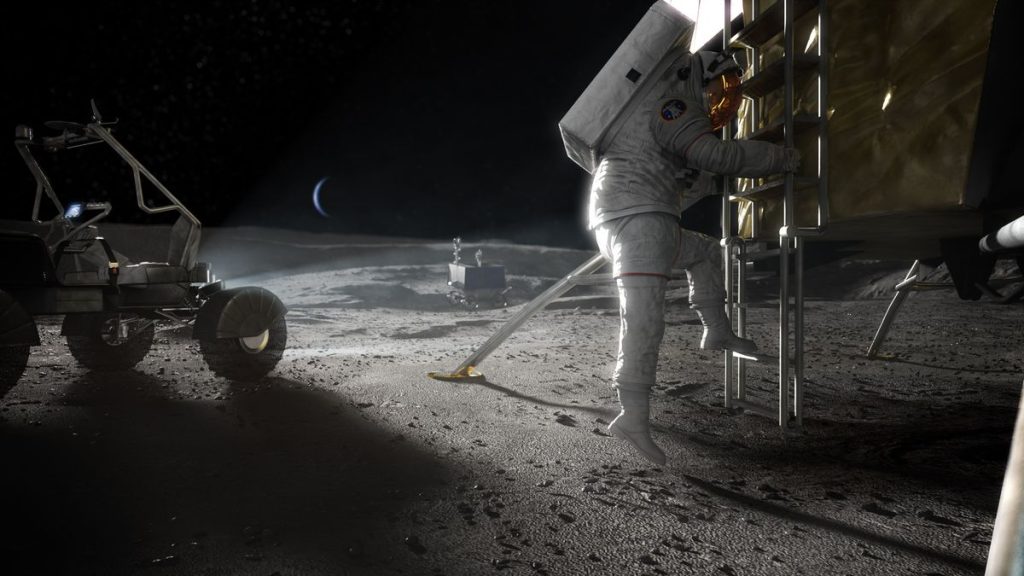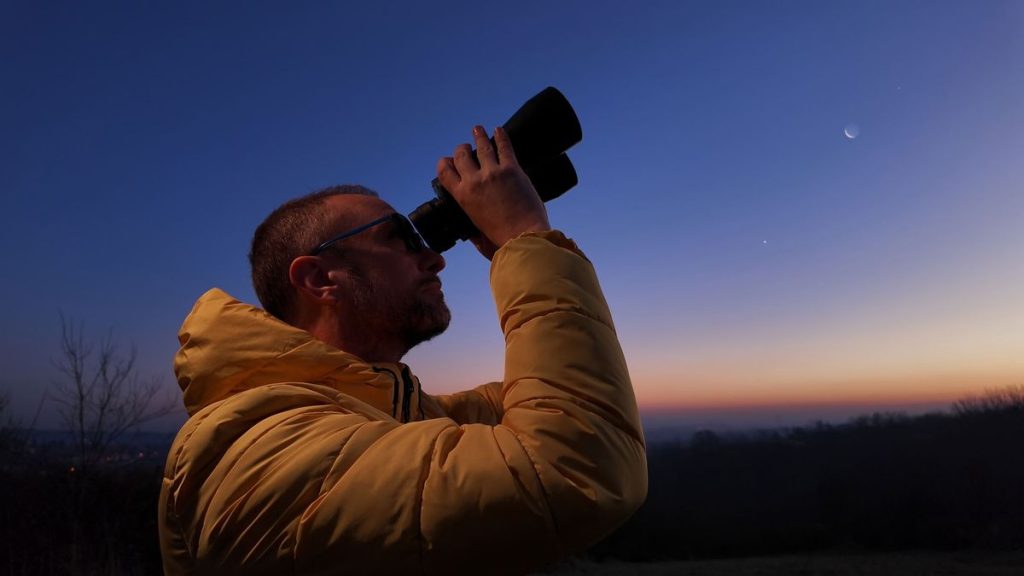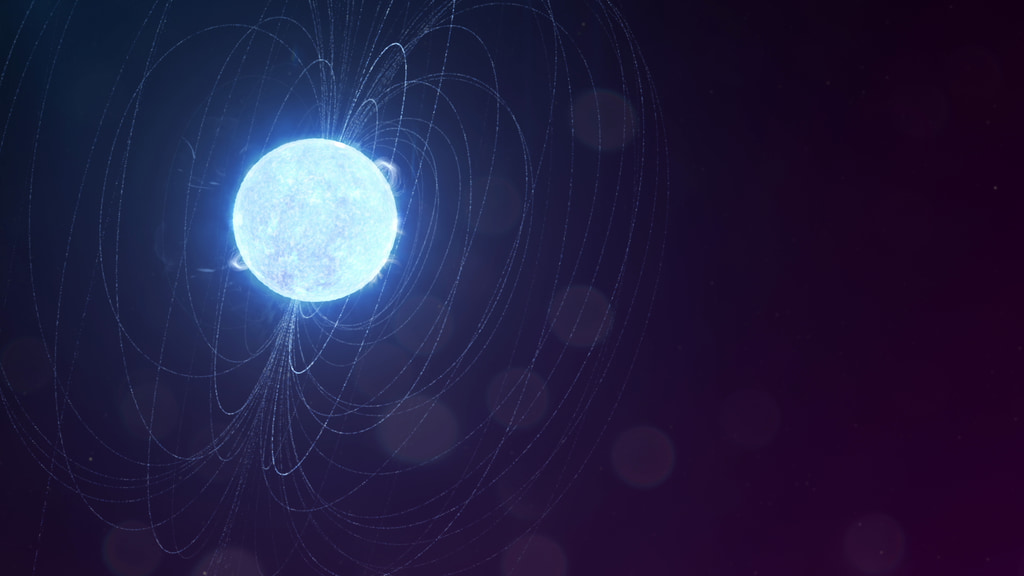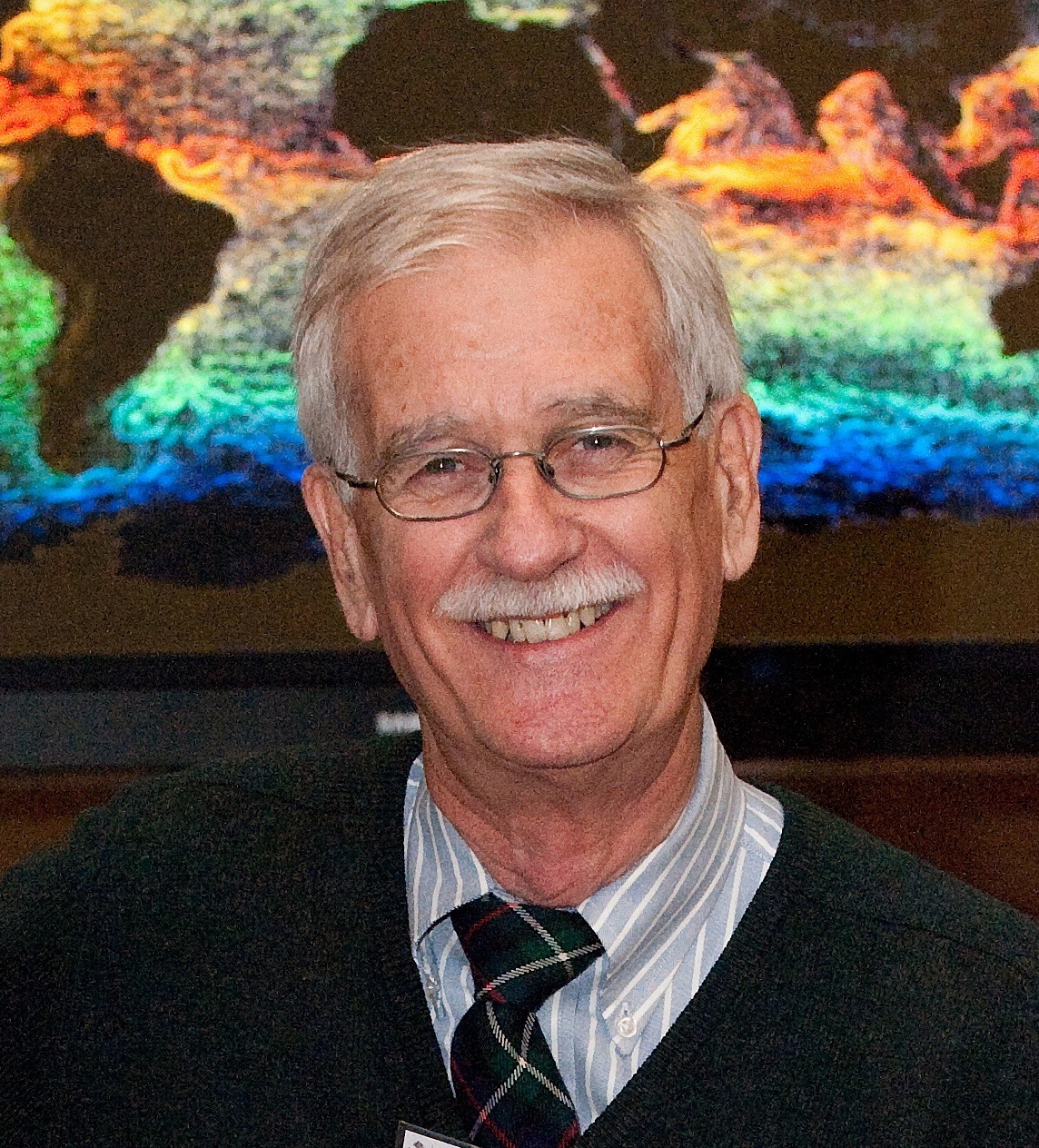Now Reading: ICESat-2 Applications Team Hosts Satellite Bathymetry Workshop
-
01
ICESat-2 Applications Team Hosts Satellite Bathymetry Workshop
ICESat-2 Applications Team Hosts Satellite Bathymetry Workshop
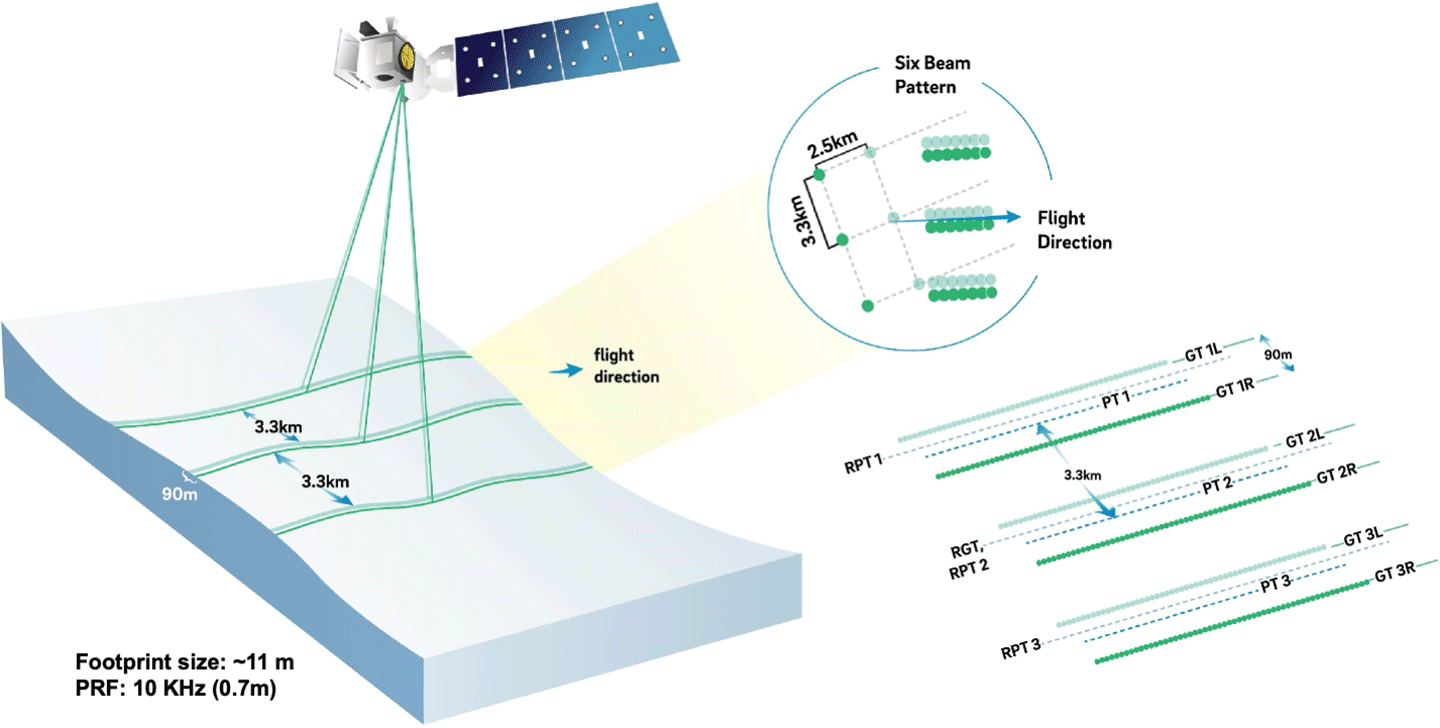
Introduction
On September 15, 2018, the NASA Ice, Cloud, and land Elevation Satellite-2 (ICESat-2) mission launched from Vandenberg Air Force Base and began its journey to provide spatially dense and fine-precision global measurements of Earth’s surface elevation. Now in Phase E of NASA’s project life cycle (where the mission is carried out, data is collected and analyzed, and the spacecraft is maintained) of the mission and with almost six years of data collection, the focus shifts to looking ahead to new applications and synergies that may be developed using data from ICESat-2’s one instrument: the Advanced Topographic Laster Altimetry System (ATLAS) – see Figure 1.
Satellite-derived bathymetry (SDB) is the process of mapping the seafloor using satellite imagery. The system uses light penetration and reflection in the water to make measurements and estimate variations in ocean floor depths. SDB provides several advantages over other bathymetry techniques (e.g., cost-effectiveness, global coverage, and faster data acquisition). On the other hand, SDB can be limited by water clarity, spatial resolution of the remote sensing measurement, and accuracy, depending on the method and satellite platform/instrument. These limitations notwithstanding, SDB can be used in a wide variety of applications (e.g., coastal zone management, navigation and safety, marine habitat monitoring, and disaster response). ICESat-2 has become a major contributor to SDB, with over 2000 journal article references to this topic to date. Now is the time to think about the state-of-the-art and additional capabilities of SDB for the future.
To help stimulate such thinking, the NASA ICESat-2 applications team hosted a one-day workshop on March 17, 2025, which focused on the principles and methods for SDB. Held in conjunction with the annual US-Hydro meeting on March 17–20, 2025 at the Wilmington Convention Center in Wilmington, NC, the meeting was hosted by the Hydrographic Society of America. During the workshop the applications team brought together SDB end-users, algorithm developers, operators, and decision makers to discuss the current state and future needs of satellite bathymetry for the community. The objective of this workshop was to provide a space to foster collaboration and conceptualization of SDB applications not yet exploited and to allow for networking to foster synergies and collaborations between different sectors.
Meeting Overview
The workshop provided an opportunity for members from government, academia, and private sectors to share their SDB research, applications, and data fusion activities to support decision making and policy support across a wide range of activities. Presenters highlighted SDB principles, methods, and tools for SDB, an introduction of the new ICESat-2 bathymetric data product (ATL24), which is now available through the National Snow and Ice Data Center (NSIDC). During the workshop, the ICESat-2 team delivered a live demonstration of a web service for science data processing. Toward the end of the day, the applications team opened an opportunity for attendees to gather and discuss various topics related to SDB. This portion of the meeting was also available to online participation via Webex webinars, which broadened the discussion.
Meeting Goal
The workshop offered a set of plenary presentations and discussions. During the plenary talks, participants provided an overview of Earth observation and SDB principles, existing methods and tools, an introduction to the newest ICESat-2 bathymetry product ATL24, a demonstration of the use of the webservice SlideRule Earth, and opportunities for open discission, asking questions and developing collaborations.
Meeting and Summary Format
The agenda of the SDB workshop was intended to bring together SDB end-users, including ICESat-2 application developers, satellite operators, and decision makers from both government and non-governmental entities to discuss the current state and future needs of the community. This report is organized according to the workshop’s six session topics with a brief narrative summary of each presentation included. The discussions that followed were not recorded and are not included in the report. The last section of this report consists of conclusions and future steps. The online meeting agenda includes links to slide decks for many of the presentations.
Welcoming Remarks
Aimee Neeley [NASA’s Goddard Space Flight Center (GSFC)/Science Systems and Applications Inc. (SSAI)—ICESat-2 Mission Applications Lead] organized the workshop and served as the host for the event. She opened the day with a brief overview of workshop goals, logistics, and the agenda.
Overview of Principles of SDB
Ross Smith [TCarta—Senior Geospatial Scientist] provided an overview of the principles of space-based bathymetry, including the concepts, capabilities, limitations, and methods. Smith began by relaying the history of satellite-derived bathymetry, which began with a collaboration between NASA and Jacques Cousteau in 1975, in which Cousteau used Landsat 1 data, as well as in situ data to calculate bathymetry to a depth of 22 m (72 ft) in the Bahama bank. Smith then described the five broad methodologies and concepts for deriving bathymetry from remote sensing: radar altimetry, bottom reflectance, wave kinematics, laser altimetry, and space-based photogrammetry – see Figure 2. He then introduced the broad methodologies, most commonly used satellite sensors, the capabilities and limitations of each sensor, and the role of ICESat-2 in satellite bathymetry.
Review of SDB Methods and Tools
In this grouping of plenary presentations, representatives from different organizations presented their methods and tools for creating satellite bathymetry products.
Gretchen Imahori [National Oceanic and Atmospheric Administration’s (NOAA) National Geodetic Survey, Remote Sensing Division] presented the NOAA SatBathy (beta v2.2.3) Tool Update. During this presentation, Imahori provided an overview of the NOAA SatBathy desktop tool, example imagery, updates to the latest version of the tool, and the implementation plan for ATL24. The next session included more details about ATL24.
Minsu Kim [United States Geological Survey (USGS), Earth Resource and Observation Center (EROS)/ Kellogg, Brown & Root (KBR)—Chief Scientist] presented the talk Satellite Derived Bathymetry (SDB) Using OLI/MSI Based-On Physics-Based Algorithm. He provided an overview of an SDB method based on atmospheric and oceanic optical properties. Kim also shared examples of imagery from the SDB product – see Figure 3.
Edward Albada [Earth Observation and Environmental Services GmbH (EOMAP)—Principal] presented the talk Satellite Lidar Bathymetry and EoappTM SLB-Online. The company EOMAP provides various services, including SDB and habitat mapping. For context, Albada provided an overview of EoappTM SDB-Online, a cloud-based software for creating SDB. (EoappTM SDB-online is one of several Eoapp apps and is based on the ICESat-2 photon data product (ATL03). Albada also provided example use cases from Eoapp – see Figure 4.
Monica Palaseanu-Lovejoy [USGS GMEG—Research Geographer] presented on a Satellite Triangulated Sea Depth (SaTSeaD): Bathymetry Module for NASA Ames Stereo Pipeline (ASP). She provided an overview of the shallow water bathymetry SaTSeaD module, a photogrammetric method for mapping bathymetry. Palaseanu-Lovejoy presented error statistics and validation procedures. She also shared case study results from Key West, FL; Cocos Lagoon, Guam; and Cabo Rojo, Puerto Rico – see Figure 5.
Ross Smith presented TCarta’s Trident Tools: Approachable SDB|Familiar Environment. During this presentation, Smith provided an overview of the Trident Tools Geoprocessing Toolbox deployed in Esri’s ArcPro. Smith described several use cases for the toolbox in Abu Dhabi, United Arab Emirates; Lucayan Archipelago, Bahamas; and the Red Sea.
Michael Jasinski [GSFC—Research Hydrologist] presented The ICESat-2 Inland Water Along Track Algorithm (ATL13). He provided an overview of the ICESat-2 data product ATL13 an inland water product that is distributed by NSIDC. Jasinski described the functionality of the ATL13 semi-empirical algorithm and proceeded to provide examples of its applications with lakes and shallow coastal waters – see Figure 6.
ATL24 Data Product Update
Christopher Parrish [Oregon State University, School of Civil and Construction Engineering—Professor] presented ATL24: A New Global ICESat-2 Bathymetric Data Product. Parrish provided an overview of the recently released ATL24 product and described the ATL24 workflow, uncertainty analysis, and applications in shallow coastal waters. Parrish included a case study where ATL24 data were used for bathymetric mapping of Kiriwina Island, Papua New Guinea – see Figure 7.
SlideRule Demo
J. P. Swinski [GSFC—Computer Engineer] presented SlideRule Earth: Enabling Rapid, Scalable, Open Science. Swinski explained that SlideRule Earth is a public web service that provides access to on-demand processing and visualization of ICESat-2 data. SlideRule can be used to process a subset of ICESat-2 data products, including ATL24 – see Figure 8.
SDB Accuracy
Kim Lowell [University of New Hampshire—Data Analytics Research Scientist and Affiliate Professor] presented SDB Accuracy Assessment and Improvement Talking Points. During this presentation, Lowell provided examples of accuracy assessments and uncertainty through the comparison of ground measurement of coastal bathymetry to those modeled from satellite data.
Conclusion
The ICESat-2 Satellite Bathymetry workshop fostered discussion and collaboration around the topic of SDB methods. The plenary speakers presented the state-of-the-art methods used by different sectors and organizations, including government and private entities. With the release of ATL24, it was prudent to have a conversation about new and upcoming capabilities for all methods and measurements of satellite bathymetry. Both in-person and online participants were provided with the opportunity to learn, ask questions, and discuss potential applications in their own research. The ICESat-2 applications team hopes to host more events to ensure the growth of this field and to maximize the capabilities of ICESat-2 and other Earth Observing systems.












